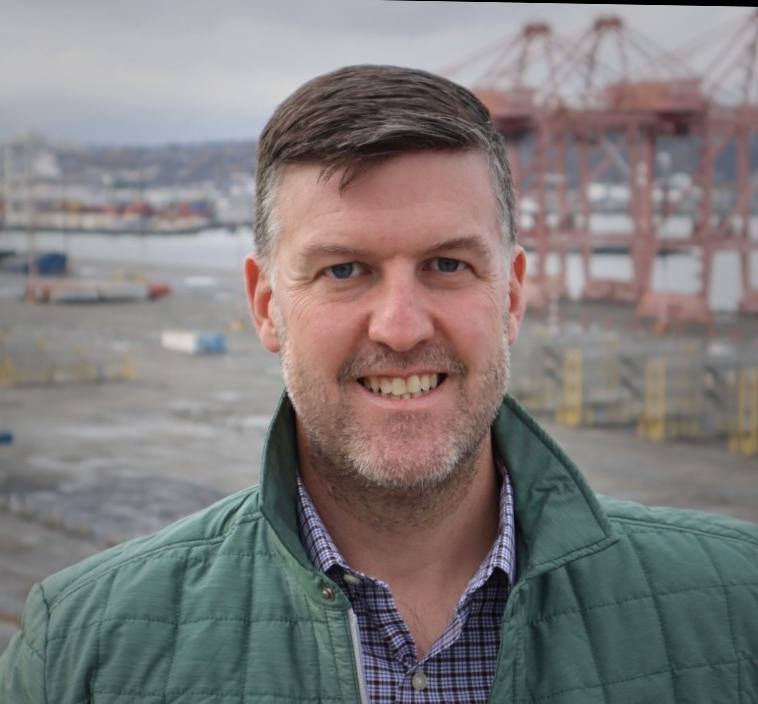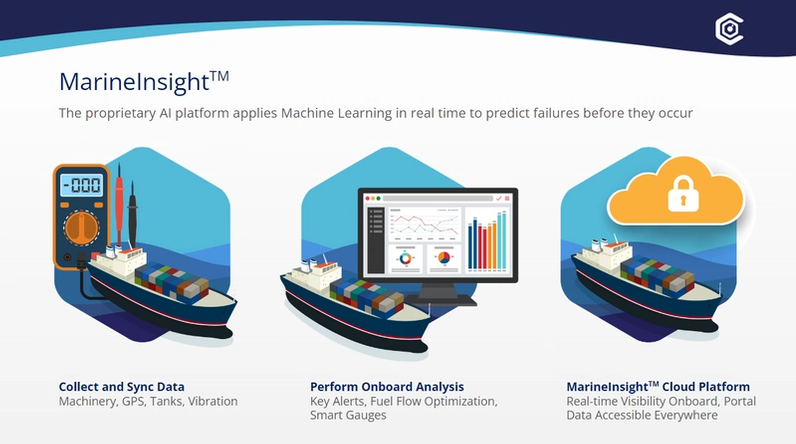ioCurrents: Deep Diving into the Data
When setting out to maximize efficiency on board any type of commercial vessel, it’s most beneficial to look at the big picture, taking into account the entirety of its systems and operations, but examined at a granular level. Traditionally, this has been much easier said than done.
But latest advancements in cutting-edge artificial intelligence (AI) and machine learning technologies like those being leveraged by Seattle-based tech company ioCurrents are unlocking new possibilities. The company brings together data from onboard sensors, and its analytics suite, MarineInsight, applies AI and machine learning models to provide real-time, analyzed, actionable data—driving greater levels of safety and efficiency across the maritime domain. The technology helps users in areas such as fuel optimization, emissions reporting, failure prediction and maintenance strategy.
Much of the general public is only just now becoming familiar with AI and machine learning thanks to the recent growth in consumer products that are making use of the technology, but ioCurrents president Will Roberts noted that the company has been ahead of the curve. “AI and machine learning have always been a backbone of ioCurrents over the last five years,” he said.
Importantly, ioCurrents is agnostic to vessel or machinery types. “We can take in the whole vessel and do the whole vessel analytics, where potentially an OEM—an engine manufacturer or a propulsion manufacturer—may only be looking at their subsystem,” Roberts said. “We bring all that data together on board the vessel, do first-level analytics and then send it to the cloud in very small data packs to allow for further analysis ashore to help both shoreside and vessel operators in optimizing their vessel operations.”
“What [this technology] has done with regards to optimization and predictive maintenance and predicting failures is amazing,” Roberts said. “I was an engineer on board a vessel, and I remember taking logs and looking for trends, and I recall not being able to find very basic trends in the data I was getting because I was busy doing a number of other tasks.
“Artificial intelligence and machine learning can look at an almost infinite amount of data and find patterns and trends and understand where anomalies are nearly instantaneously in comparison to the human eye,” Roberts said, noting that advancing technologies have enabled vessel owners to “leapfrog” in their abilities to better understand their vessels and systems.
 "Artificial intelligence and machine learning can look at an almost infinite amount of data and find patterns and trends and understand where anomalies are nearly instantaneously." - Will Roberts, President, ioCurrents
"Artificial intelligence and machine learning can look at an almost infinite amount of data and find patterns and trends and understand where anomalies are nearly instantaneously." - Will Roberts, President, ioCurrents
The technology also allows customers to “see the future”, Roberts said. “When we get our system on board and we look at the vessel and its subsystems, we create multiple models to predict what's going to happen. We create multiple virtual ships that allow us to predict how to extend operations and/or if there's going to be a potential equipment failure. That can only be done nowadays with machine learning and AI.”
Roberts said ioCurrents is represented in almost every maritime segment and that its offering can unlock gains for any type of vessel, whether it’s the smallest tugboat or the largest oceangoing containership. Most recently, ioCurrents signed a deal to provide its MairneInsight software for Kitsap Transit, a ferry operator in Washington State.
“We have a dozen return on investment (ROI) statements, and any company could probably find three or four instantaneously that fit within their operational profile,” Roberts said. “Almost every vessel would benefit from lowering their fuel consumption, both in the dollar value of the fuel, but also in lowering environmental impact—that’s a double win. . . There's always an opportunity to be better.”
According to Roberts, most ioCurrents customers are seeing returns that are generally three to five times what they’re paying for their subscription to the service.
 (Image: ioCurrents)
(Image: ioCurrents)
The company will typically compare its customers’ standard operating procedures with actual operations to identify deviations. For example, crews could be running their vessels too fast or too slow, or not using a specific piece of machinery as intended. “Our ability to monitor and help with those operations allows companies to operate in the way that they intended to, and that provides great ROI immediately, either in reducing fuel consumption or reducing the wear and tear on equipment,” Roberts explained. “Reducing one or two major overhauls on an auxiliary generator or a main engine because it’s being used more efficiently generates huge OpEx savings.”
 (Image: ioCurrents)
(Image: ioCurrents)
On top of that, even greater returns are achieved through predictive analysis. “The incidental costs of having an incident happen out at sea are very expensive,” Roberts said, noting that on several occasions ioCurrents has helped to prevent potential failures and enable owners to fix problems quickly and in a more cost-effective manner, avoiding longer and costlier tie-up periods—or worse.
It will be some time yet before an official report outlines the cause of the fatal Dali bridge allision in Baltimore, but it’s possible technology like ioCurrents' could have helped identify potential issues before they occur. “We'll never say that our technology is 100% foolproof in terms of stopping things like this, but we will say that we've saved main engines before, and we've helped crews find incidences before they've happened,” Roberts said. “The more information you have at your fingertips and the more people are looking at things, you're able to reduce the risk.”
The technology also aligns with ESG initiatives by reducing fuel consumption, optimizing maintenance, and lowering carbon footprints. “Our company was founded on the basis of reducing emissions and making the maritime world greener. We are doing that by ensuring that fuel consumption is lowered and maintenance is optimized,” Roberts said. “It's a very straightforward math problem that says if you lower fuel consumption, you'll lower your carbon footprint, but you also lower your costs. Everybody wins when you can be more environmental and more economic in maritime operations.”















